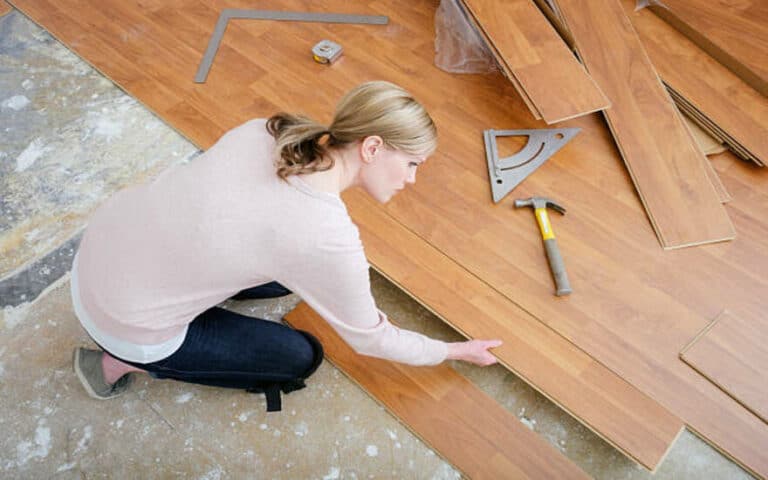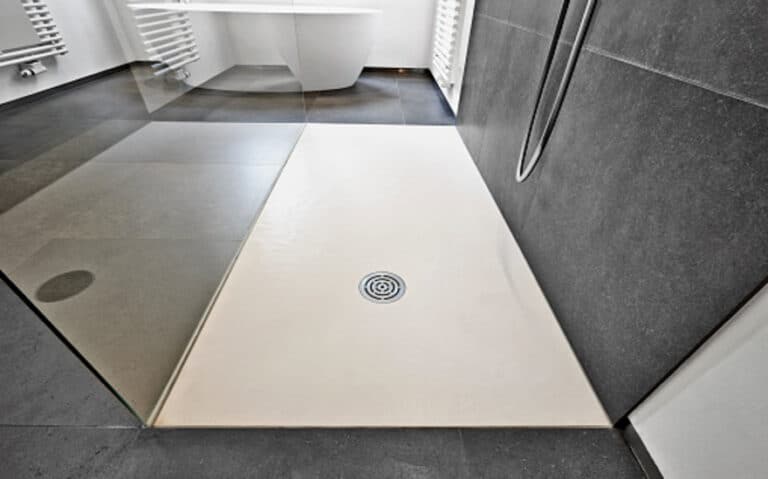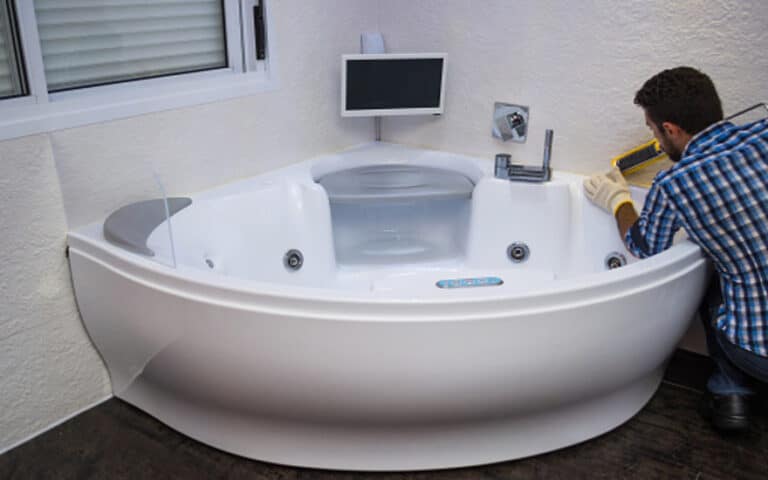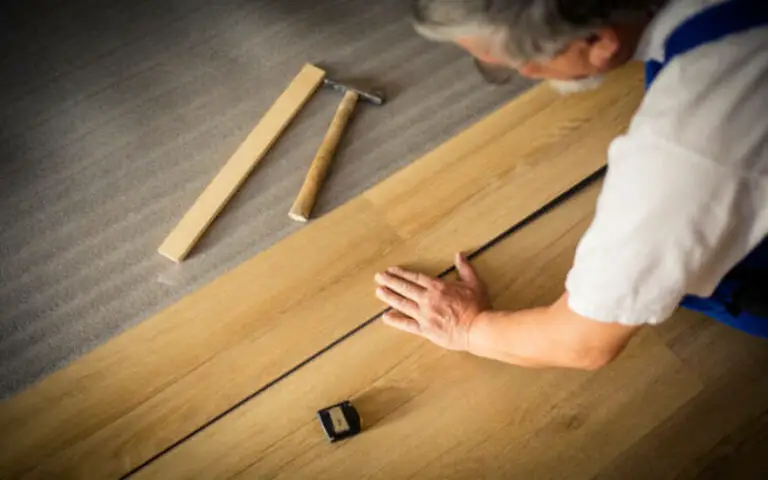I’ll explore some of the best materials for soaking up water on your floor quickly and easily.
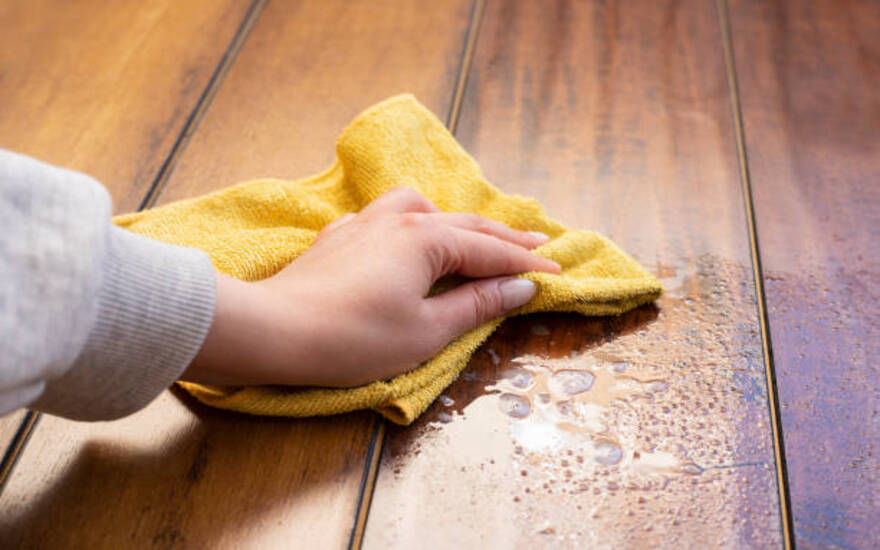
Wet wood flooring: 10 Drying Advice to Minimize Damage
When it comes to wet wood flooring, the best way to minimize Damage is to take the necessary steps to dry it as soon as possible. This includes removing all wet items from the area and soaking up any standing water with towels or a wet vac.
#1 Ventilation
Ventilation is another crucial step in drying out wet wood floors. Open all windows and doors to allow air to circulate and help evaporate the moisture. You can also use fans to increase airflow and speed up drying if possible.
By improving ventilation, you can reduce the time it takes for your flooring to dry completely. Additionally, if the source of the water leak is coming from outside, make sure you find and stop the start of the water as soon as possible to prevent further Damage.
#2 Moisture Absorbing Materials
Using materials that absorb moisture is another excellent way to help dry your wet wood flooring. Look for materials like absorbent cloths, towels, or mops to soak up any standing water.
When all of the standing water is gone, you can also lay down thick towels on the surface of the flooring to help draw out any additional moisture. Additionally, you can look for desiccants like silica gel that can draw moisture out of the air and help dry out the floor further.
Be sure to replace these materials frequently as they become saturated and no longer absorb moisture.
#3 Cleaning and Drying the Surface
Once the source of the water leak has been stopped, it’s time to start cleaning and drying the surface. To do this, remove all floor coverings like carpets, rugs, mats, and any furniture or items in the area.
Use a wet/dry vacuum to suction up any standing water. Continue vacuuming the surface until it appears to be dry. Next, use a damp cloth to clean soiled areas and scrub away any dirt or debris left behind by the water.
Finally, open up windows and use fans to increase airflow and help dry out the area. Following these steps can help minimize Damage to your wood flooring caused by a water leak.
#4 Using a Dehumidifier
After cleaning the surface and soaking up all the excess water, it’s time to bring in the big gun: a dehumidifier!
This machine is designed to reduce the amount of moisture in the air and can be set to full power to draw out any lingering moisture deep within the wood. Ensure you place it in the center of the room and leave it running until you are confident that all water has been extracted.
It’s also important to keep an eye on any wet spots that may appear and dry them out immediately — this will help ensure that your floor is arid and free from Damage.
#5 Heating to Evaporate the Moisture
Heating is one of the most effective methods for evaporating moisture from wet wood floors. However, it is essential to note that this method should only be used when the humidity levels are low.
Excessive heat will only increase the humidity, making it even more challenging to dry out the floor.
The best way to apply heat is to use a fan heater, which evenly distributes heat across the affected floor area. Additionally, it would be best if you used a thermostat to keep the temperature safe and not leave it unattended for long periods. With these tips in mind, heating can be an effective way to dry out wet wood floors.
#6 Using Fans to Increase Air Flow
Using fans to increase airflow can help speed up drying after a water leak. Fans help to circulate air throughout the room, which allows moisture to evaporate faster. Additionally, fans help draw out moisture from wet surfaces like walls and floors.
This can be especially helpful if you’ve already used towels, mops, and clean rags to soak up any standing water. If you have a dehumidifier, running fans in the same room can help increase its effectiveness and draw out more moisture from the air.
Ensure the fan points away from the wet surface to avoid pushing moisture back into it. You can dry out your damp wood flooring with proper ventilation and the fans and minimize any long-term damage.
#7 Using a Wet Vacuum Cleaner
A wet vacuum cleaner is an effective way to quickly suck up as much water as possible from hardwood floors.
This step should be done immediately after the floors get wet, and it can help remove a significant amount of the water before it has a chance to seep in and cause further Damage. A wet/dry vacuum is ideal for this task, as it can extract both damp and dry debris.
However, be cautious when vacuuming wet floors, as this process could cause Damage if done incorrectly.
Once most of the water has been removed, lay down thick towels to soak up any remaining moisture and ensure proper ventilation and insulation to help dry out the area thoroughly.
#8 Use of Desiccants
Using desiccants is a great way to remove moisture in the air on wet wood flooring. Desiccants are materials that absorb moisture and can be used to draw out water vapor from the air. This option is excellent if you can’t access a dehumidifier or fans.
Place desiccants around the room, and they will absorb all the excess moisture. Be sure to replace them regularly, though, as they will become saturated over time and must be changed.
By taking these steps, you can help ensure your wet wood flooring is dried out quickly and prevent further Damage.
#9 Using Wood Floor Cleaners
Once you’ve removed the excess water from your wood floors, cleaning the surface is essential. Wood floor cleaners are specially formulated to remove dirt, grime, and built-up residue that can damage your floors.
Using a wood floor cleaner is an easy way to keep your floors looking beautiful and help protect them from further Damage. Be sure to follow the directions on the cleaner for best results, and dry the surface thoroughly after cleaning.
These extra steps will help ensure that your floors look great for years to come!
#10 Ensuring Proper Insulation
It is essential to ensure that your flooring is correctly insulated totter Damage. Insulation helps keep your floor’s temperature consistent and prevents it from getting too cold and causing warping. Additionally, proper insulation can prevent water from seeping through cracks in walls and ceilings and collecting on the floor.
To ensure proper insulation, ensure that any wall or ceiling cracks are properly sealed, that any air leaks are taken care of, and that the correct type of insulation is installed in the right places.
By taking these steps, you’ll be better equipped to protect your hardwood flooring from water damage and maintain its beauty for years.
Lay Down Thick Towels to Soak Up Water on the Floor
When removing water from your floors, layering down thick towels is an effective way to soak up moisture.
Thick towels are especially good at absorbing water and will help reduce the number of towels needed to get the job done. It’s important to use thick towels because they drink more water than thin towels.
Once you’ve used the towels, you can use a wet vacuum cleaner, a dehumidifier, a shop vacuum, or a desiccant to remove moisture from the floor. Additionally, ensure you’re using proper insulation and increasing air flow with fans to prevent further Damage.
The Best Tools for Getting Water Out of a Basement
Getting water out of your basement can be a daunting task. Fortunately, a range of tools can help with this problem.
For larger areas, wet-dry vacuums such as Vacmaster Shop are the best solution for quickly extracting water from floors. For smaller sizes, mops are great for soaking up water on the floor and can be used with fans and dehumidifiers to speed up the drying process.
In addition to these tools, using desiccants, wood floor cleaners, and proper insulation can help prevent moisture from accumulating in your basement. You can quickly and effectively get water out of your cellar using the right combination of these tools.
Using a Shop Vacuum to Extract Water from Floors
Using a shop vacuum to extract water from floors is a great way to quickly and effectively remove water and moisture from your home. The best tools for getting water out of a basement are a wet/dry shop vacuum and a dehumidifier.
Set up the shop vac to suck up the water and use the dehumidifier to reduce moisture levels in the air. If you don’t have access to power, you can also try using towels or rugs to soak up the water.
However, if you have access to power, renting a wet/dry shop vacuum from your local hardware store is the most efficient way to eliminate unwanted water. With this powerful tool, you can easily remove moisture from your flooring, walls, and other surfaces, helping to protect your home from further Damage and mold growth.
final Verdict
In conclusion, there are many ways to soak up water on the floor. Wet wood flooring can be particularly damaging, so taking the necessary steps to dry and restore it as soon as possible is essential.
This can be done through ventilation, moisture absorbing materials, cleaning and drying the surface, using a dehumidifier, heating to evaporate moisture, using fans to increase airflow, using a wet vacuum cleaner, use of desiccants, using wood floor cleaners, ensuring proper insulation, laying down thick towels to soak up water on the floor, using the best tools for getting water out of a basement and using a shop vacuum to extract water from floors.
These methods can help you soak up water from your floors and prevent further Damage.


